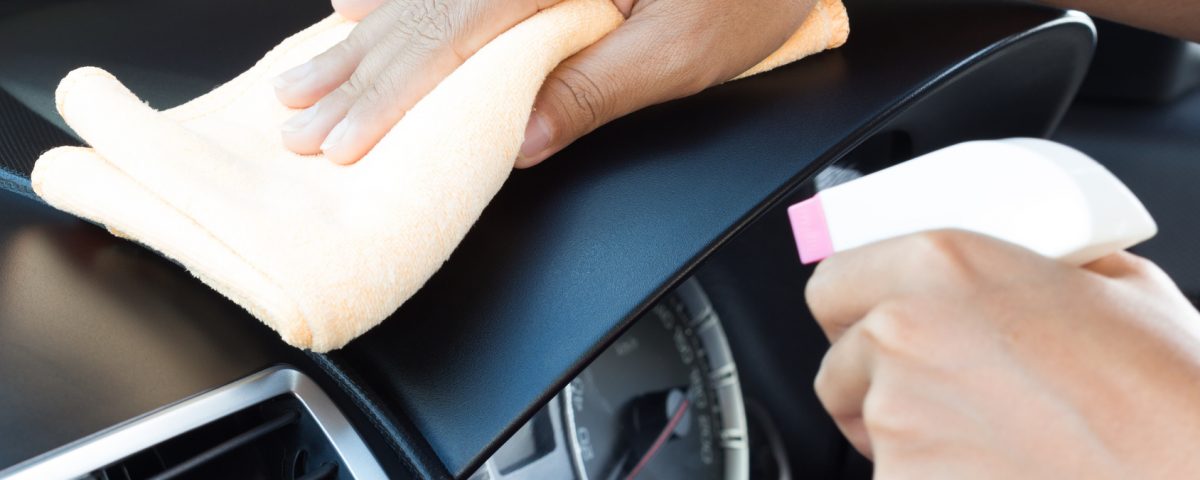- Auto Body Repair - Collision Center
- Leon Valley (210) 680-1987
- Walzem at IH 35 (210) 858-3630
- info@miraclebp.com
How advanced safety tech affect car repairs

Miracle Body & Paint on the radio
We have already been cleaning all vehicles before they are returned to our customers. But during this time we are taking extra precautions. All Miracle Body & Paint customer vehicles who are dropping off or picking up their vehicle will be cleaned and disinfected to prevent the spread of the virus, Covid-19.
Therefore, we want to do our part to protect our staff and the public in general from this virus and all other flues and viruses as well. This Covid-19 virus has become a pandemic meaning that it’s widespread in many countries and is currently spreading in America.
We will be following the cleaning and disinfecting procedures and processes published and recommended by the Boston Public Health Commission dated in March 2020 which specifically related to our industry.
COVID-19 is a new respiratory virus. COVID-19 spreads mainly from person to person. It is spread through respiratory droplets produced when an infected person coughs or sneezes. These droplets can land on people who are nearby (within 6 feet). It may also be possible for a person to get COVID-19 by touching a contaminated surface or object and then touching their
own mouth, nose, or eyes.Cleaning and disinfecting objects and surfaces, especially those that are frequently touched (such as doorknobs, handles, tabletops, etc.) can help prevent the spread of COVID-19.
Supplies
• Waterproof gloves, such as nitrile or dishwashing gloves
o Gloves protect you from exposure to the virus and to the cleaning chemicals
o Provide gloves in a variety of sizes. Gloves that are too big make it hard to hold
objects and easier for bacteria and virus to get inside. Gloves that are too small
can rip or tear
• Soap or detergent, warm water, clean towels, plastic trash bags
• Disposable gowns for all cleaning related tasks, including handling trash
• Masks and goggles (optional to protect yourself from exposure to cleaning chemicals)
Disinfectants:
o Bleach solution. To make a bleach solution, mix 1 tablespoon of bleach to 1quart (4 cups) of water. For a larger supply, add ¼ cup of bleach to 1 gallon (16 cups) of water. Use the solution within 20 minutes.
o Other EPA-approved disinfectants may be used if they are effective against Coronaviruses or other infections. Consumers may contact the “1-800” number on product label for its effectiveness against a specific infection. For specific disinfectants against COVID-19, visit https://www.epa.gov/pesticideregistration/list-n-disinfectants-use-against-sars-cov-2
o For surfaces that corrode or are damaged by bleach, use registered products effective against the specific virus/bacteria that are rated to not damage that surface type.
How to Clean
General Best Practices:
• Wear gloves while cleaning.
• Use chemicals in a well-ventilated area. NEVER mix cleaning chemicals with one
another. This may create hazardous gases.
• Prevent chemical contact with food during cleaning.
• Handle used towels, gloves, etc. as little as possible.
Boston Public Health Commission | Infectious Disease Bureau
1010 Massachusetts Avenue | Boston, MA 02118 | www.bphc.org | 617-534-5611
Cleaning and Disinfecting to Prevent COVID-19 | English | March 2020
To Clean Hard, Non-Porous Surfaces:
• Hard non-porous surfaces include stainless steel, floors, kitchen surfaces, countertops, tables and chairs, sinks, toilets, railings, light switch plates, doorknobs, metal/plastic toys,
computer keyboards, remote controls, recreation equipment.
• Steps for cleaning and disinfecting:
- Follow labeled instructions on all containers.
- Clean surface with soap and water to remove all visible debris and stains.
- Rinse surface with clean water and wipe with clean towel.
- Apply the disinfectant. To effectively kill the virus, make sure the surface stays wet with the disinfectant for at least 10 minutes before wiping with a clean towel.
- Rinse with water and allow surface to air dry. Rinsing the surface with water following use of a disinfectant is especially important if the surface is in a food preparation area.
- Remove gloves and place in a trash bag and discard.
- Wash hands after removing gloves and handling any contaminated material, trash or waste.
To Clean Soft, Porous Materials:
• Soft, porous materials include carpeting, rugs, towels, clothing, sofas, chairs, bedding, soft fabric toys (i.e., stuffed animals), etc.
• Steps for cleaning and disinfecting: - Place soft, porous materials in a bag.
- Launder using hot water and a detergent containing color-safe bleach.
- Dry on high heat.
If you are an employer, it is your responsibility to:
• Have policies and procedures about infection control.
• Provide policies, procedures, and training to employees on infection control.
• Provide all infection control supplies to employees.
Remember, there are measures we can all take to prevent respiratory
illness.
The best way to prevent infection is to avoid exposure to the infection. BPHC always recommends standard precautions to help prevent the spread of respiratory viruses:
• Wash your hands often with soap and water for at least 20 seconds.
• Use alcohol-based hand rubs and gels if you can’t wash your hands with soap and water.
• Avoid touching your eyes, nose, and mouth with unwashed hands.
• Avoid close contact with people who are sick and stay home when sick.
• Cover your cough or sneeze with your arm/elbow, not your hand. - Clean and disinfect frequently touched objects and surfaces.


